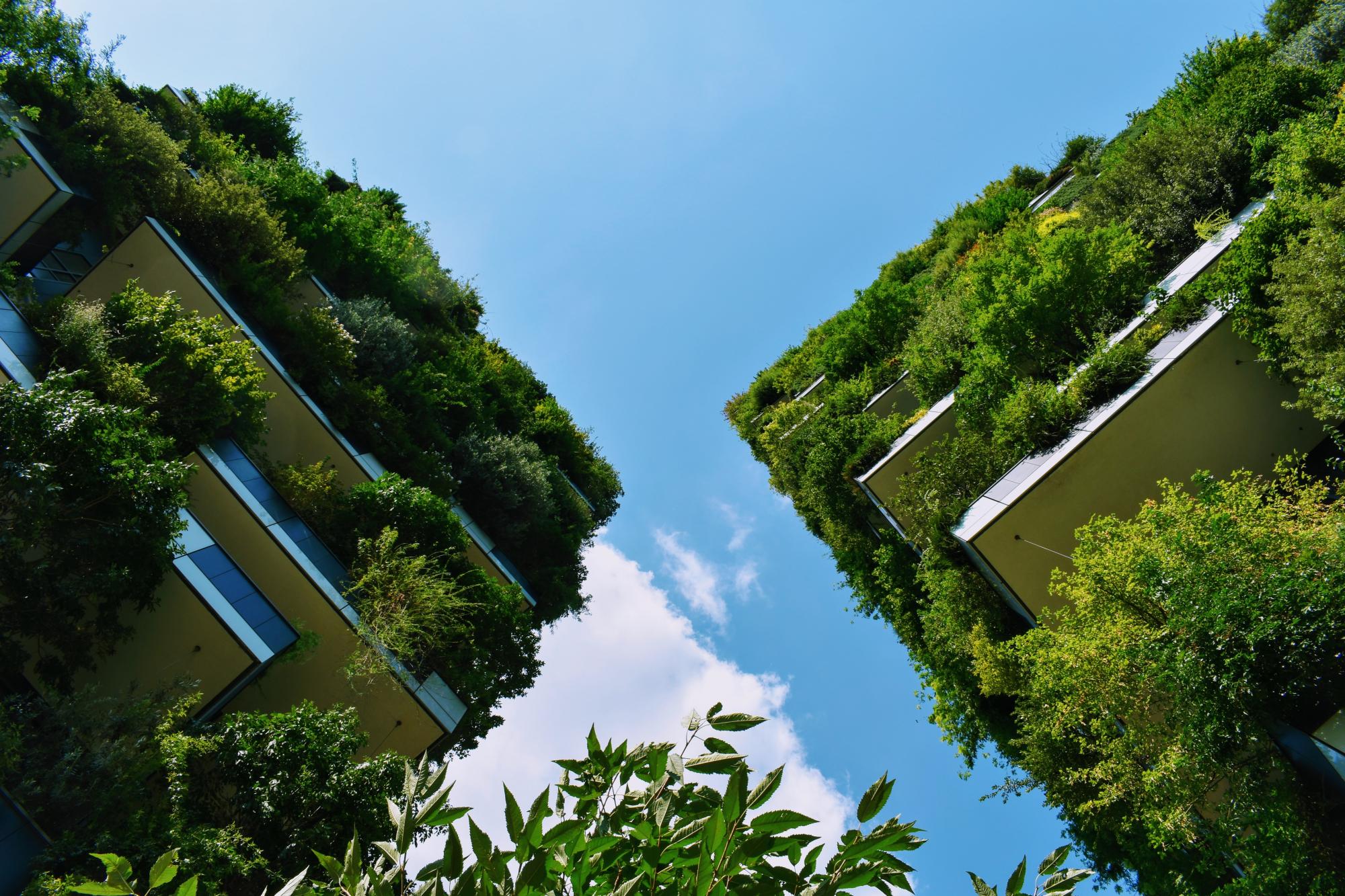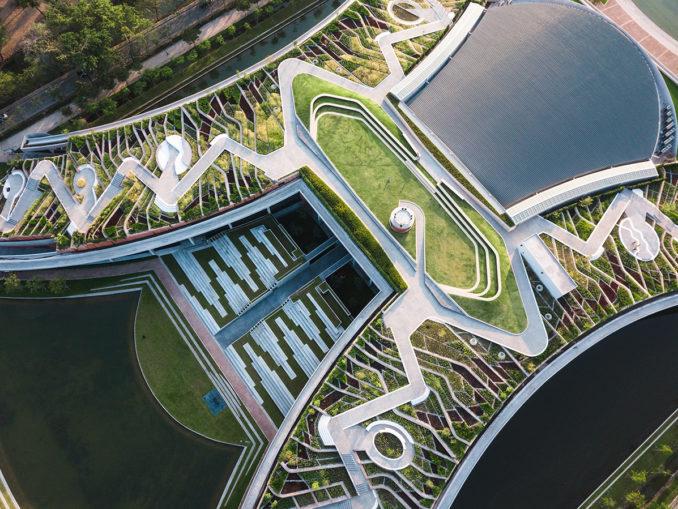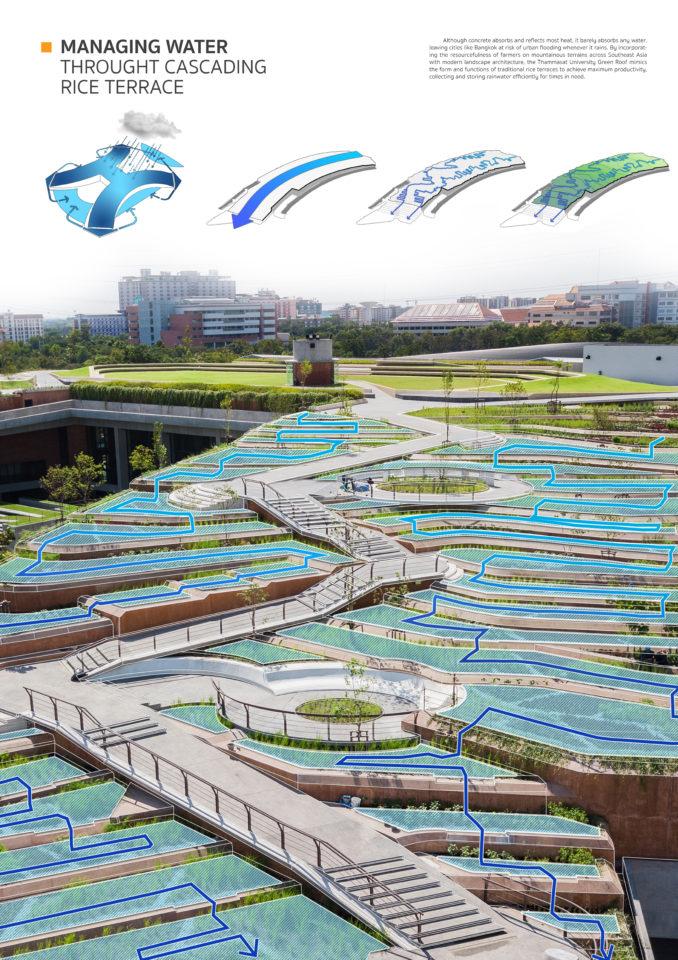Thammasat Urban Rooftop Farm (TURF) is Asia's largest organic rooftop farm, which unites principles of modern landscape design with traditional agriculture of rice terraces, to transform wasted space into productive land. By mimicking traditional rice terraces, Thammasat University Urban Farming Green Roof has become an all-in-one solution–as a public green space, urban organic food source, water management system, energy house, and outdoor classroom–which serves as an adaptation model for anticipated climate impacts that can be implemented and developed across Thailand and Southeast Asia. Additionally, the mountain-shaped Thammasat University Green Roof utilizes its vast space as an infinite source of clean energy, not only in terms of organic food but also solar power for the community. [1, 2, 3]
Overview
Nature-based solution
- Nature on buildings (external)
- Green roofs
- Community gardens and allotments
- Community gardens
- Horticulture
- Green areas for water management
- Rain gardens
Key challenges
- Climate action for adaptation, resilience and mitigation (SDG 13)
- Climate change adaptation
- Water management (SDG 6)
- Flood protection
- Stormwater and rainfall management and storage
- Improvements to water quality
- Green space, habitats and biodiversity (SDG 15)
- Habitat and biodiversity restoration
- Green space creation and/or management
- Regeneration, land-use and urban development
- Promote natural styles of landscape design for urban development
- Economic development and employment (SDG 8)
- Economic development: agriculture
- Cultural heritage and cultural diversity
- Preservation of historic traditions
- Sustainable consumption and production (SDG 12)
- Sustainable production
Focus
Project objectives
Implementation activities
Climate-focused activities
Climate change adaptation:
- Implement solutions to capture/store water to increase its availability and prevent shortages from droughts
- Increase or improve urban vegetation cover to help reduce outdoor temperature
- Implement green walls or roofs to lower indoor temperature and provide insulation
- Create or improve outdoor spaces to help people escape from urban heat
Biodiversity conservation or restoration-focused activities
Biodiversity restoration:
- Restore species (native, endangered, or unspecified)
- Restore native species
Main beneficiaries
- Researchers/University
- Citizens or community groups
- Young people and children
Governance
Management set-up
- Led by non-government actors
Type of initiating organisation
- Public sector institution
- Researchers/university
Participatory approaches/ community involvement
- Dissemination of information and education
- Joint implementation (e.g. tree planting)
Details on the roles of the organisations involved in the project
Project implemented in response to ...
Financing
Total cost
Source(s) of funding
- Unknown
Type of funding
- Unknown
Non-financial contribution
- Provision of labour
- Provision of expertise
- Citizens (e.g. volunteering)
- Other
Impacts and Monitoring
Environmental impacts
- Climate change
- Lowered local temperature
- Strengthened capacity to address climate hazards/natural disasters
- Environmental quality
- Improved soil quality
- Water management and blue areas
- Improved water quality
- Increased protection against flooding
- Improved stormwater management
- Green space and habitat
- Promotion of naturalistic styles of landscape design for urban development
- Increased green space area
- Increased conservation or restoration of ecosystems
- Reduced biodiversity loss
- Enhanced support of pollination
Economic impacts
- Increase of green jobs (e.g. paid employment positions)
- Increase in agricultural production (for profit or not)
Socio-cultural impacts
- Social justice and cohesion
- Improved access to urban green space
- Increased opportunities for social interaction
- Increased involvement of locals in the management of green spaces
- Increased access to healthy/affordable food
- Increased sustainability of agriculture practices
- Cultural heritage and sense of place
- Protection of historic and cultural landscape / infrastructure
- Education
- Increased support for education and scientific research
- Increased awareness of NBS and their benefits
Type of reported impacts
Presence of formal monitoring system
Presence of indicators used in reporting
Presence of monitoring/ evaluation reports
Availability of a web-based monitoring tool
References
2. South China Morning Post (2020). University near Thai capital Bangkok is home to one of Asia’s largest rooftop farms. Thammasat University Urban Rooftop Farm YouTube Video. URL: Source link. Accessed on 17th September, 2021.
3. Holmes, D. (2020). Thammasat University – the largest urban rooftop farm in Asia. World Landscape Architect. URL: Source link. Accessed on 17th September, 2021.



